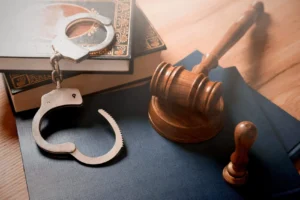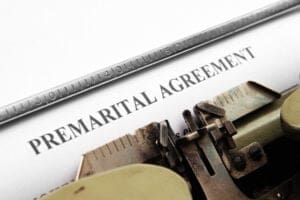Chapter 7 vs. Chapter 13 Bankruptcy: A Simple Guide
Debt can feel like a heavy burden that never goes away. When bills continue to pile up and there is no clear way to catch up, it can be easy to feel trapped. For many people in the United States, bankruptcy provides a path forward. Although filing for bankruptcy is not an easy decision, it can offer relief and a chance to rebuild. The two most common options for individuals are Chapter 7 and Chapter 13 bankruptcy. While they share the same goal—helping people get control of their finances—they work in very different ways. Understanding the basics of each can help you figure out which option may be right for your situation.
What Is Bankruptcy?
At its core, bankruptcy is a legal process that happens in federal court. When someone files, they are asking for protection from creditors and a way to either erase or restructure their debts. It does not make financial problems magically disappear, and it does come with long-term effects on credit. However, for many people, it provides a chance to start fresh and stop the cycle of overwhelming debt.
Understanding Chapter 7 Bankruptcy
Chapter 7 bankruptcy, sometimes referred to as liquidation bankruptcy, straight bankruptcy, or even a fresh start bankruptcy, is the most common form chosen by individuals. In this type of case, the court assigns a trustee to review your financial situation. If you own valuable property that isn’t protected by law, the trustee may sell those assets to repay creditors. Once this process is complete, most unsecured debts—like medical bills, credit card balances, and personal loans—are fully discharged.
If you want to understand how Chapter 7 bankruptcy works, think of it as a legal process designed to give you a clean slate. By discharging most unsecured debts and protecting essential assets through exemptions, it allows individuals who can’t repay their debts a chance to start fresh without being buried under financial pressure.
Many people fear that filing under Chapter 7 means giving up all of their belongings. In reality, most filers keep the majority of what they own thanks to bankruptcy exemptions. These exemptions safeguard necessary assets such as basic household goods, a reliable car, retirement savings, and even some home equity. Unless you have expensive luxury items, you’ll likely lose very little, if anything at all. Another major benefit of this type of bankruptcy is its speed—the process usually wraps up within three to six months, making it one of the quickest ways to reset your finances and move forward.
Understanding Chapter 13 Bankruptcy
Chapter 13 works differently. Instead of wiping out debts immediately, it allows you to reorganize them into a manageable repayment plan. This is why it is often called “reorganization bankruptcy.” In Chapter 13, you and your attorney create a plan to repay part of your debts over three to five years. The amount you pay depends on your income, expenses, and ability to contribute. Once you successfully complete the repayment plan, any remaining eligible unsecured debts may be discharged.
To better understand how Chapter 13 bankruptcy works, think of it as a financial reset that doesn’t erase everything at once but allows you to manage debts under court supervision. This structure ensures that you repay only what you can realistically afford while safeguarding your most important property.
Chapter 13 is usually chosen by people who have a steady income and want to protect valuable assets. For example, if you are behind on your mortgage but want to keep your home, Chapter 13 bankruptcy allows you to catch up on payments over time while preventing foreclosure. It can also stop car repossessions and consolidate debts into a single monthly payment. The trade-off is that it takes much longer than Chapter 7, since you are committed to a three- to five-year repayment plan.
Comparing the Two Options
Although both types of bankruptcy provide relief, they are designed for different situations. Chapter 7 is best suited for people with little or no disposable income who simply need a fresh start. It clears debts quickly but may put non-exempt property at risk. Chapter 13, on the other hand, works better for people who can afford regular payments and want to keep their home, car, or other assets. It requires commitment and discipline since it lasts several years, but it allows you to protect property and resolve debts gradually.
The impact on credit also differs slightly. A Chapter 7 bankruptcy stays on your credit report for ten years, while Chapter 13 remains for seven. In both cases, your credit score will take a hit, but many people begin rebuilding soon after filing. Responsible use of secured credit cards, timely bill payments, and careful budgeting can help improve credit within a year or two.
Deciding Which Is Right for You
Choosing between Chapter 7 and Chapter 13 depends largely on your income, the type of debts you have, and whether you want to keep certain assets. If you have little to no ability to repay debts, Chapter 7 may provide the quick relief you need. If you have steady income, are behind on your mortgage, or own property you want to protect, Chapter 13 may be the better option. Because eligibility rules apply and the consequences can be serious, it is always best to consult with a bankruptcy attorney before making a decision.
Life After Bankruptcy
Both Chapter 7 and Chapter 13 will affect your credit, but you can rebuild. Many people start improving their credit within a year by:
- Paying bills on time.
- Using secured credit cards responsibly.
- Saving money for emergencies.
Bankruptcy is not the end of your financial journey—it’s a new beginning.
Final Thoughts
Chapter 7 and Chapter 13 bankruptcy both serve the same purpose—providing relief from overwhelming debt—but they do so in very different ways. Chapter 7 offers a quick fresh start by erasing most unsecured debts, while Chapter 13 provides a structured way to repay and protect valuable property. Both options come with consequences, especially for your credit, but they also open the door to a more stable financial future. Bankruptcy is not a sign of failure; it is a step toward recovery. With the right guidance and careful planning, you can use it as a fresh start to rebuild your financial life.


















